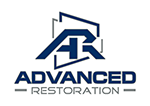Sometimes what we can’t see is even more important than what we can see when it comes to safeguarding a structure. Building exterior waterproof membranes are crucial to building protection, but unless you were the one who did the building, you might not even know they’re there! Milwaukee is prone to wet weather and even flooding, and waterproof membranes are the standard, first-line defense against water damage to structures. Waterproof membranes are flexible, physical barriers of either sheet-based or liquid-applied material added during the construction or restoration process that keep water where it should be. Waterproof membranes are often included around swimming pools, showers and bathtubs, and in the exterior walls, foundations, basements, and roofs of structures. They are also a part of tunnels and other underground construction projects where water penetration could be a problem.
Why Waterproof Membranes Are Needed
While the idea behind waterproof membranes is to keep the water out, they aren’t infallible, and need to be replaced if they are unstable or leaking. Most of the materials used in construction and restoration, like concrete for example, are porous. This means that moisture can permeate the material and soak through. Waterproof membranes are needed to protect the rest of the structure from getting wet and developing water damage, which can affect the safety of the building and have negative health impacts for occupants due to issues like mold. In a historic structure, waterproof membranes may be failing or out-of-date. Newer technologies in waterproofing make it much more effective and long-lasting, so installing new waterproofing is worth the investment for long-term results.
Waterproof Membrane Types & Installation
Because waterproof membranes are inside the building envelope, initial installation usually occurs during construction. Accessing extant waterproof membranes and installing new ones is part of the restoration process or can be a separate repair if waterproofing is the only issue being addressed.
A number of different waterproof membrane types may be applied to a structure, which include a variety of sheet-based and liquid-applied options. Examples include:
Sheet-Based:
- Polymer-Modified Bitumen Membrane
- Polyethylene Membrane
- Thermoplastic Membrane
- EPDM (Ethylene Propylene Diene Terpolymer) Membrane
Liquid-Applied:
- Polyurethane Membrane
- Bituminous Membrane
The installation processes for sheet-based and liquid waterproof membranes differ and therefore require their own approaches. We will work with you to determine the best option for your needs.
Stay Ahead Of The Weather
With waterproof membranes expertly installed, you can stay ahead of the weather when it comes to protecting your property from water damage. Advanced Restoration is here to help you prevent leaks in any kind of structure, from homes and businesses to historic structures of all kinds. Contact us today with your questions about waterproof membranes, to discuss a project, or to get a quote!

